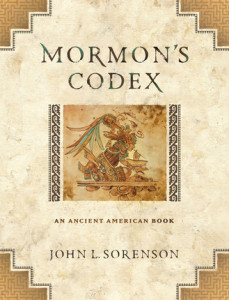Podcast: Download (27.5MB)
Subscribe: RSS
From the book: Of Faith And Reason: 80 Evidences Supporting The Prophet Joseph Smith
by Michael R. Ash
The Church of Jesus Christ of Latter-day Saints claims to be the restored church, therefore, many of its supposedly “unique” doctrines are actually restored doctrines which had previously been taught in the Lord’s church.
With the exception of the letters of the Apostolic Fathers and the writings of the early Christians and historians, most of these recently discovered or rediscovered manuscripts fall into one of three categories of ancient writ. These categories are 1) Gnostic, 2) Pseudepigrapha, and 3) Apocrypha.
All three categories embody works which are considered by many scholars to be equal in importance to the scriptures included in our Bibles today. Likewise all of the above categories contain works which the Primitive Church (either Jewish or Christian) embraced as scripture.
When comparing the teachings of the Lord’s church to the Church of Jesus Christ of Latter-day Saints –organized in 1830, there are certain similarities. Yet most of these ancient texts lay unnoticed, unstudied, or unknown until the last seventy-five years. In episode two of Faith and Reason, Michael R. Ash discusses the ancient writings that continue to influence Christ’s church today.
Michael R. Ash is the author of: Of Faith and Reason: 80 Evidences Supporting The Prophet Joseph Smith. He is the owner and operator of MormonFortress.com and is on the management team for FairMormon. He has been published in Sunstone, Dialogue: A Journal of Mormon Thought, the Maxwell Institute’s FARMS Review, and is the author of Shaken Faith Syndrome: Strengthening One’s Testimony in the Face of Criticism and Doubt. He and his wife live in Ogden, Utah, and have three daughters.
Julianne Dehlin Hatton is a broadcast journalist living in Louisville, Kentucky. She has worked as a News Director at an NPR affiliate, Radio and Television Host, and Airborne Traffic Reporter. She graduated with an MSSc from the Maxwell School of Citizenship and Public Affairs at Syracuse University in 2008. Julianne and her husband Thomas are the parents of four children.
Music for Faith and Reason is provided by Arthur Hatton.




